What’s The Story, Muthur?
To the point, tabletop gaming
D&D’s Best Intro Campaign? I ran Lost Mine of Phandelver For My Group
Lost Mine of Phandelver (LMoP) is the first D&D 5e starter set adventure. Released in 2014, LMoP is an event driven campaign for 3 - 5 players, taking characters from level 1 - 5.
By JimmiWazEre
Opinionated tabletop gaming chap.
TL;DR: Lost Mine of Phandelver starts strong with tight early dungeons and a solid onboarding for new players, but quickly loses focus. The villain is forgettable, the pacing drifts, and structural choices teach new DMs bad habits like railroading and pulling punches. I rebuilt huge sections and turned it into a spaghetti western, giving the BBEG presence, adding time pressure, and replacing the green dragon with a recurring ancient red. The result was decent enough, but only because of heavy rewrites.
Run it as written and you’ll learn the hard way.
Introduction
Belch, Duncath, Twig, Diego, and Nasbo fire up the Forge of Spells.
From the shadows: slow clap. “Well done…” says the Black Spider, stepping into the dim light. “You have been my pawn from the start…”
Her skin tears away. Her back splits. The Black Spider crumples, replaced by an ancient red dragon — Dragos, the Destroyer of Worlds.
“Bow before me… or burn in this place!”
What is the Lost Mine of Phandelver?
Lost Mine of Phandelver (LMoP) is the first D&D 5e starter set adventure. Released in 2014, LMoP is an event driven campaign for 3 - 5 players, taking characters from level 1 - 5.
It took me several months of play to finish this, you could probably do it faster but we’re limited to 2-3 hours sessions twice a month.
That’s right folks, it’s another review from Jimbo about a product that’s been out for chuffin’ ages already! Wooo.
Spoiler Warning
As written, the adventure is set on the Sword Coast, near Neverwinter, this dwarf dude named Gundren Rockseeker has found the legendary Wave Echo Cave (WEC), and the valuable Forge of Spells (FoS) within. He's recruited you to help him clear the place out and get it up and running.
The only problem is that en route to the frontier town of Phandalin, near WEC, Rockseeker is kidnapped by the Cragmaw Goblins, leaving you and your fellows to pick up the pieces.
The bulk of the adventure then follows the PCs as they attempt to find and rescue Rockseeker, discover the location of WEC for themselves, and thwart the various factions who're standing… sometimes in their way, and sometimes just off to the side.
This all ends with a fight against a BBEG you’d be forgiven for forgetting about called The Black Spider, who's been orchestrating all the local problems from the shadows like some moustache twirling villain out of a Saturday morning cartoon.
Ok, that's you all caught up.
So, What's it trying to do differently?
LMoP is a starter set, so it's trying to teach new DMs and players how the game works over the course of a strictly Event Driven Campaign (EDC). Emphasis on strictly, because all modules sit somewhere on a scale between sandbox and railroad. Well, this adventure sits at 90% railroad and IMO that’s too much for something that’s meant to set expectations.
The big problem here is that the EDC structure is a rigid sequence of set pieces where the players are nudged from one scene to the next. In my opinion, that’s a rubbish exposure to how an adventure should look for a new DM, and it’s a big reason you see so many online complaints about railroading from players regarding their lack of agency, and from burnt out DMs begging for help over their stress trying to force the flow of the game towards the predefined solution.
What does it do well?
Cragmaw Hideout in act 1 is a neat and concise little dungeon that does a good job teaching players about stealth, traps, competing factions, multiple paths and solutions. Aside from being too verbose, (which I’ll get to later) the dungeon presents a nice little challenge to the players, and is easy enough to run for the DM.
Redbrand Hideout too, is a little bigger but still very well designed and reinforces those lessons about multiple routes, traps, and adds rewards for extra exploration. It also includes a cool encounter with a Nothic which can lead to fun shenanigans - like sucking the skin off a willing dragonborn’s finger!
Finally I can confirm that this adventure contains both dungeons and a dragon, which at the very least earns it points for correct advertising.
Unfortunately that's about as much as I can honestly say that I thought was legitimately good. Everything else is 'meh' at best.
Yikes, I've got some beef. What didn't I like?
Deep breath.
Teaching the Wrong Lessons
Ok, so, as it's meant to be played the first encounter is a forced combat, seemingly 'balanced', and yet it's so deadly that any DM playing the ambushing goblins with any degree of tactical nouce should cause a TPK within a few turns. This is a terrible lesson - forced combats are bad enough, but making brand new DMs fight with one hand tied behind their back to give the fledgling players half a chance sets a bad precedent about expecting fudged rolls for both parties.
The text should acknowledge the deadliness here, and then give very specific guidance on what to do as DM if the player’s do not win.
Much later, Cragmaw Castle offers a false dichotomy. You see, players can go in the front door but that's obviously trapped, but if they do then it leads to several routes through the dungeon until the end and a potentially satisfying experience.. However, because of the aforementioned trap, the players do a quick bit of recon, and discover that they can just walk around the outside the castle and go in through the prominently placed side door with a simple pick lock check. After that they can chance upon skipping the entire dungeon by turning right on a whim and walking straight to the boss room with Gundren.
The game is trying to teach players that there are multiple paths and choices, but if one of those choices is obviously the right answer, then that's no choice at all - all we’re left with is an anti-climax.
Terrible Layout
Man alive, I hate long form text! If you want to run from the book (because, you know, that's why you bought a book in the first place) without having to spend hours rewriting and summarising it, then the DM is required to parse long form prose over several pages then flip back to a map for reference. This is no way to design an adventure, and it makes running scenes slow and easy to mess up.
Below is just 2 pages from the 9 page WEC dungeon. Can you imagine trying to read that at the table, under pressure, and then articulate it back to your players? And those read aloud text boxes - my player’s would be asleep!
Half-baked “Story”
Gundren, the whole game is about rescuing Gundren, but other than a single boring real-aloud text box which mentions him at the start of the game - the players never meet him or have any genuinely gripping reason to care that he’s missing other than an underwhelming amount of GP offered as a reward.
In truth, the game comes with pre-gen characters that we didn’t use, and one or two of them have some tertiary connections to Gundren and Phandalin, but you don’t meet his brothers until the end so they’re not pressing you forwards, and the relationship Gundren has with Sildar is only mercantile, so why should he bust a nut begging for your help?
Then there’s the Black Spider. A BBEG that players just don't care about. As written, you never meet the Black Spider until the end, and you barely learn anything about them, their motives, or even that they're particularly evil or just misunderstood. That's a real kicker when you consider that this is so story driven - what's the point of a baddie if the players don't have an opinion about them?
It feels like ancient wisdom to say that a dragon that most players will never meet is no dragon at all. If a dragon falls over in the woods but no PC is there to hear it - does it still make a noise? Well, said dragon lives in Thundertree, which is so far removed from the main quest that I can't see many players naturally finding it without heavy DM fiat. What a waste of the game's only dragon!
Important DM Skills Completely Ignored
The game doesn't give you any tools to address pacing. Gundren has been kidnapped, but time might as well be standing still for days on end whilst you side quest. This should be used to teach DMs about driving urgency and hammering the game forwards with a simple GM facing timeline of steadily worsening events that happen if the PCs fail to act.
Speaking of act - after you finish up with the Redbrands, act 3 suddenly opens up into a sandbox which sends jarring messages about the game becoming a hex crawl. There’s only the most cursory guidance given to teaching DMs this new skill, and when the players have just experienced two acts teaching them that the game is a railroad about a time sensitive rescue mission, the sudden lack of direction brings the game screeching to a whiplash inducing halt.
Then, in act 4, WEC is such a large and boring dungeon that even the designers feel obliged to acknowledge as much. To combat this, rather than equipping the DMs with detailed knowledge about how to run a procedural dungeon crawl, the game settles for a quick paragraph about rolling a d20 on a random monster table according to GM fiat. This is not sufficient, not even close.
How did I run it?
I'm an experienced GM so after giving the game a cursery read through and seeing a tonne of things both objectively and subjectively bad, I had lots of work cut out for me to make a bunch of changes.
Some of those changes were quite experimental and not all of them worked as I'd hoped. We lives and learns, don’t we precious?
Setting
To start with - old forgotten mines, gangs, a frontier town... come on - this is a western, and yet, the game seems to forget this. Barely anything else nods towards this as the game defaults again and again to generic European fantasy land. Bugger that. So I reskinned it into a spaghetti western, including house-ruling in sixshooters. Much better.
Then, given my aforementioned loathing of long form prose at the table, I went through every dungeon and rewrote every room out for brevity and utility. Check out this post if you want to learn how to do this.
Goblin Arrows
This was really experimental, I ran act 1 as a lvl 0 gauntlet - each player had a cast of 4 characters each and whoever survived until after Cragmaw Hideout got to level up to 1, gain a class and became their primary character. This worked pretty well, but if you try it yourself make sure your players fully understand what's going to happen, as most of their characters will die by design and the players are expected to embrace this. It worked for me, just about - but you do you.
Phandalin
The cast of Phandalin got pruned down to just a few memorable NPCs. One of Gundren’s brothers was dead from the start, murdered by the Redbrands to push that conflict to the front. Sister Garaele became possessed by Agatha the Banshee, forcing the party to solve that before they could get her help.
I got rid of Thundertree as well, it's too far away from the adventure site and has absolutely nothing to do with anything. I also swapped out the young green dragon who lives there with an ancient red dragon; Dragos, Destroyer of Worlds, and I had him turn up every now and then as this ever present threat to extort treasure from the players. Man, they hated that dude!
The Black Spider was given presence. Introduced early under the guise of a serving girl at the Sleeping Giant Inn, I had her and the party competing to secure a lockbox (Thanks Matty P) containing a vital key to the Forge. She even kidnapped a beloved NPC, turning her from an abstract villain into someone the players actively hated.
The Spider’s Web
In Act 3, I tried expanding Old Owl Well into a full “funhouse” dungeon, and even though it was cool, it heavily distracted from Gundren’s rescue and confused the group about what mattered. The lesson there was clear: trying to add sandbox elements into a strict railroad just muddies both.
By the end of the Old Owl Well thread my players had pretty much forgotten all about Gundren, so I very quickly abandoned the idea of the exploratory sandbox, and swiftly provided more clues to guide the players towards his rescue where I made liberal use of progress clocks to make sure my players knew what was at stake. That alone is responsible for rescuing the Cragmaw Castle session from being a massive anticlimax due to it's bad dungeon design. If you want to learn about how and why to use progress clocks, check this post.
Wave Echo Cave
Wave Echo Cave was rebuilt into something tighter and easier to run. The maze became a tense skill challenge instead of a drawn-out slog.
At the climax, I revealed that the Black Spider was actually Dragos all along, which was a nice twist. One of my players even sided with the ancient red dragon whilst the others chose to fight, which gave me the opportunity to finish a campaign my favourite way - with a massive PvP monster bash.
You see, I placed 5 pilotable stone golems in the FoS chamber, and when battle commenced, the players used these in their combat against Dragos (who was controlled by the player who sided with him) - it was awesome and played out like the finale of an episode of Power Rangers, whilst I got to sit back and watch this really tightly fought match between titans.
What do other commentators say?
Matty P over on YouTube really likes LMoP, and I took a lot of his tips to heart about improving the story and trimming some of the fat, over the course of his full playlist . Definitely worth watching if you're planning on running it.
Conclusion
In the end, I have mixed feelings about LMoP, but I'm unfortunately leaning towards it being a bit pants. I really enjoyed acts 1 and 2, but the adventure rapidly drifts away from focus in act 3. additionally, for a game all about a prewritten story, said story requires a major rewrite to make it satisfactory.
Also, as a starter set to introduce new players and DMs to D&D, I think it probably does more harm than good if I'm being honest. I'd like to try to excuse it's flaws by saying it's really old, but frankly, there are starter adventures for earlier editions that have existed for much longer and nail it - Keep on the Borderlands anyone?
I guess I enjoyed myself running it, but only because I enjoying playing games with my friends, and maybe that's enough for you too? That said - I would have enjoyed myself even more running something better.
Hey, thanks for reading - you’re good people. If you’ve enjoyed this, it’d be great if you could share it on your socials - it really helps me out and costs you nothing! If you’re super into it and want to make sure you catch more of my content, subscribe to my free monthly Mailer of Many Things newsletter - it really makes a huge difference, and helps me keep this thing running!
Catch you laters, alligators.
Very Belatedly, The Monster Overhaul Is The Best Damned ‘Monster Manual’ I’ve Read
Geared towards value as an in-game tabletop resource, The Monster Overhaul is a TTRPG bestiary that contains 200+ creatures, 20+ maps, traditional D&D style line art, and about a bazillion random tables of improv friendly prompts.
By JimmiWazEre
Really quite hungry, but otherwise opinionated tabletop gaming chap
TL;DR: Looking for the best monster manual for TTRPGs? The Monster Overhaul delivers 200+ creatures, logical organisation, and improv-focused tools that make running games faster (betterer, strongerer) and more dynamic.
This post contains affiliate links
What is The Monster Overhaul?
Well obviously, it’s “a practical bestiary by Skerples” of course, it says so on the front cover, see the image below if you don’t believe me :)
In case you don’t know, Skerples (a pseudonym, their real name unknown - Although, I’d like to think it’s something like ‘Max Danger’) is a bit of a rockstar in so much as we have them in the OSR blogging community. Kind of like a Banksy, for nerds.
Coming on the scene in the back end of the tweenies with the successful Coins and Scrolls blog, Skerples is responsible for community favourites such as the introductory OSR dungeon; the Tomb of the Serpent Kings and the somewhat gloriously whimsical Monster Menu-All: Eating the AD&D Monster Manual.
“Skerples wanted this book to exist, and it didn’t exist, and therefore had to create it” - Kickstarter
Geared towards value as an in-game tabletop resource, The Monster Overhaul (TMO) is a TTRPG bestiary that contains 200+ creatures, 20+ maps, traditional D&D style line art, and about a bazillion random tables of improv friendly prompts.
It was launched as a Kickstarter in 2022 with the help of Editor; Dai Shugars and a small team of artists including Dyson Logos & Lucas Roussel (and many more), and then delivered in 2023.
Naturally, I’m late to the party with my review coming in a solid 2 years after the fact. That means this blog post is neither evergreen, timely, nor an attempt to make an emotional connection with the audience. Good work there Jimbo - blogging 101 master… Don’t worry folks - I’m gambling on a late surge of interest which will rocket this post to the top of every single Google search. Wish me luck.
OK, this review isn’t sponsored in any way either, I bought the book myself. Twice technically, because I’m an idiot. Sigh, let’s get on with it shall we?
What’s It Trying To Do Differently
I see TMO as a clear reaction to the popular mid/late-tweenies 5e school of thought, whereupon a surge in new people into the hobby lead to the inability to correct en masse an oft held assumption among GMs to view creatures as little more than bags of hit points to simply be balanced against player characters for them to fight. “Fairly”.
Instead, this book wants to flip the script and give creatures breadth and depth to their behaviour and motivation, to help train GMs to replace the idea of a “combat encounter” with the more liberating idea of a “generic encounter” - in other words, not all encounters with creatures need to be conflicts, or if they do, then they certainly don’t all need to be combats, or if they do, they certainly don’t need to be balanced!
Additionally, it’s clear that TMO wants to address the issue of TTRPG books being mostly full walls of top to bottom long form text, and nigh on impossible to use effectively whilst under pressure at the game table. If you’ve read my guide on how I prep notes for an adventure, you’ll understand where I’m coming from.
So, What Works Well
All the information in TMO is presented concisely, which is great when you’re at the table trying to find something out on the fly. If you’re anything like me - then you cease to be able to function efficiently when presented with lengthy prose to parse under pressure. Skerples (AKA Max Danger, by me exclusively) obviously recognises this and has made sure that each monster write up is lean and to the point, functional, and respects the urgency of the moment. That’s… liberating.
Additionally, each creature gets a set of bespoke prompts delivered in a tabular format which allows the GM to quickly add some extra flavour to a vanilla monster (terrible metaphor - I bloody love vanilla), in turn presenting the players with an array of hooks and roleplay opportunities to explore as solutions… you know, as opposed to simply presenting the same bland goblin we’ve seen a hundred times before, thus setting the expectation of another combat.
Such flavour might include names, attitudes, motivations, where their home is, modus operandis, catchphrases, favourite riddles - the list goes on and is bespoke for each creature, with more options provided for more worthy creatures.
Without saying the same thing over and over again in a slightly different way, this; 🡱 is the money, right here. If you only wanted the main reasons to pick this book up, they’re in the former three paragraphs. Reread them if you have to - I’ll wait. If they don’t sell you on it, then nothing else will.
You want to know more? OK, well the book is organised by the logical category (habitats, seasons, game genre) that you would find the monsters in - so what, right? This is another clever way of saving your time at the table. Imagine, your players are in a dungeon and you need to make up an encounter on the fly - Now the most relevant ingredients of that encounter are all next to each other in the book and you don’t have to go page flipping.
Not that the book makes page flipping hard though - with a handy ribbon bookmark to keep your page, and sturdy stitch binding, I’m confident that my copy of TMO is going to last for years despite the regular use.
Why It Might Not Be For Everyone
This book is great, but I wouldn’t be doing you any favours if I didn’t highlight some of the reasons that it might not be right for you. So here we go:
It ain’t cheap by a long shot. I mean, sure, you pay for quality - and I’m certain that Skerples can’t afford a loss leader business strategy, but we’re talking £50 for the hardback book. Even the corporate overlords at WOTC are only charging about £35 for their latest monster manual wheeze. The PDF isn’t much cheaper either: £22 squidlyroos! That said though, would I rather have something cheap, or good? For me - it’s totally worth it. Twice in fact.
If you’re running something with heroic style characters like Pathfinder or D&D 5e, then this book is still great for you for all the improv prompts and stuff, but you are gonna need a separate resource for your monster stats - well, either that or the ability to convert them satisfactorily on the fly.
The book is the same sort of size as a WOTC book. It’s mahoosive. Sure that means it’s packed full of value and creamy marrowbone jelly, but it also means it’s quite unwieldy to have this beast hidden behind your GM screen among your dice, notes, and stash of Universal Monster Tokens.
The artwork inside is all very old school, black and white lines - I think this is very, very cool in general, but some of the art isn’t for me, maybe not for you either. Additionally, if you’re wanting full colour spreads, this isn’t that.
Reeeeally nitpicking now, but I wasn’t kidding when I said those pages were chock-a-block full of stuff. I’m… not normal (ha!), when I see that much stuff on a page it can be quite disorienting. That’s not to say that I didn’t get used to it though, but it’s something to be aware of which could be an issue for some folk, let’s call it a lack of whitespace!
What Other Reviewers say
My own conclusion is coming below, but in the meantime, whilst you might think that it’s a novel approach to include content from other creators in my review, my stance is that if information is power, then my dudes, I want you to be powerful. Let me know in the comments at the end of the review if you appreciated the links to these videos, or if you think I should leave them out next time.
Conclusion
I really like this book! It’s an evocative, actionable toolbox for GMs, and so much more than a mere monster manual.
If you want to pick it up, I have an affiliate PDF link for Drive Thru RPG (The Monster Overhaul) and physical copies affiliate links for Compose Dream Games (UK) and (North America). These should give you plenty of options, and if you use them then it means I’ll get a small kickback on the sale at no extra cost to you. Go on, treat us both ;)
Hey, thanks for reading - you’re good people. If you’ve enjoyed this, it’d be great if you could share it on your socials - it really helps me out and costs you nothing! If you’re super into it and want to make sure you catch more of my content, subscribe to my free monthly Mailer of Many Things newsletter - it really makes a huge difference, and helps me keep this thing running!
Catch you laters, alligators.
Chariot of the Gods for Alien RPG: Wot I Think After Running It
Split over three distinct acts, CotG is a one shot, or “cinematic” adventure that took my group about 6-7 hours to finish.
I’m gonna be straight up with you - the key thing that I love about this is module is that after act 1, most of the GM’s hard work is over.
By JimmiWazEre
Opinionated Tabletop Gaming Chap
TL/DR - Love, love, love the system and the adventure, loath the rulebook or module layouts. Had an absolute blast running it and my players enjoyed it too. Made us hungry to play Destroyer of Worlds next.
This post probably contains spoilers. If you’re thinking about GMing this, then please read on, but if you’re a player - you have been warned.
Oh, and this post also contains affiliate links in case you want to pick up the game.
This is Captain Miller, last surviving crew member of the USCSS Montero. Signing off.
Thus ended last Sunday’s 6 hour long adventure; Chariot of the Gods for Alien RPG by Free league.
I want to use this post to share my thoughts about it, and the system in general. I liked it, lots. But it’s not quite as straightforward as that.
A bit of preamble about the 1e Ruleset First
CotG is the starter set adventure, so it seems only fair to assume that most people might be experiencing the core rules for the first time too. Now, built off the Year Zero Engine, I love the core rules of Alien RPG - let me open there, but I do not like the rulebook.
Possibly a good place to start is with the fact that Free league are releasing a new edition* of Alien RPG in September 2025, and they say that they’re doing it to address many of the community issues with the current rulebook.
It’s a smart move because as lovely a ‘thing’ (full of lore and art) that the 1e core rulebook is, and as fundamentally great that the rule system is - the rulebook itself doesn’t appear to have been written with enough effective consideration towards functionality.
*Totally compatible with minimal tweaks required to play it with existing adventures.
How not to Design a rulebook
Let me give you an example. So, on your character sheet, there’s something called “Air”. As GM, you’ll want to know the game mechanics for how Air runs down, and what happens when it runs out. So you’re gonna go to the index and search for “Air” - because if it’s a named stat on the official character sheet, it should be in the index, right?
It’s not there.
You pause, think a moment, and maybe you realise to look under “Consumables” instead, because Air on your sheet is listed under a section titled Consumables. That takes you to page 34. Page 34 mentions that consumables decrease, and for those rules, you’re told to go to page 35.
As for what happens when you run out of air? Page 34 vaguely tells you to “see Chapter 4”.
What, the entire chapter? Or am I now expected to scan through a bunch of pages until I stumble across the answer?
To be fair, the chapter 4 thing is an error with my printed version of the rulebook, it’s actually in chapter 5, but even new revisions don’t tell you that it’s specifically page 110. I scanned through all of chapter 4, and then most of chapter 5 before I found that.
Yes, even reading alone, that was as enjoyable as it sounds.
But all that aside, I’d just had to read hundreds of words presented in long form prose, I’d had to mentally separate the actual rules from the sea of guff about how too much carbon dioxide is dangerous, and not having air is bad for you. That’s exhausting.
As someone familiar with breathing, I don’t need a paragraph telling me that not having air is bad, especially when I’m at the game table. I just want to know how your game handles it mechanically.
How to Design a rulebook
Designers - I love you, you made one of my favourite games, but the rules for air should be searchable by index, on one page, and be concise like this:
Whenever it makes narrative sense (such as after physical exertion), have players roll a number of d6 equal to their current air supply. For every [1] rolled, reduce their air by 1.
Once a player’s air hits 0, they must make a Stamina check every round to stay conscious. Starting from the second round, reduce their dice pool by 1 each time.
If they ever fail a Stamina check, they drop to 0 health and must make a death roll each round until they’re either supplied with air, or they until die from asphyxiation.
Much better. Concise, no waffle, no page flipping. If future editions took this kind of structure to heart, it’d be a huge win.
The Year Zero Engine
I’ve spoken before about the central mechanic before, so I don’t need to repeat that here - but I’m a big fan of the overall elegance of the system. Simple character sheets and flat stats go a long way towards keeping the flow of gameplay going, and Free league have done a really good job with the Year Zero Game Engine here.
I’m also a massive fan of the way Alien RPG avoids GM Conflict of Interest, by having you roll for the monsters actions. After about an hour of building tension, my players were set upon by an Abomination in the hallway. It was a perfect introduction to the terror of the world when the dice gods decided that the Abomination would lunge forward, grip Paige’s character; Davies’ skull and crush it like a swollen pimple.
Life is cheap in Alien, but when you’ve got a healthy backlog of fleshed out NPCs with character sheets, it takes the sting out of character death.
I asked one of my players, Alan, for his perspective after the session:
The system for Alien is fantastic, it has all the details and stats you need but is done in a very concise and simple way that I found very enjoyable, and a massive improvement on the more complex RPG systems out there. At no point was I getting bogged down by stats, or left checking around every inch of my character sheet when the GM asked for a specific roll, and because of this I found I could spend more time getting into the module itself and the role playing parts, giving me a proper chance to get lost in the games world.
For me personally, I struggle with how much crunch games like 5e give you, and whenever we have to pause to check things in manuals it can really cause a funk in the rhythm, there was none of that with this and honestly that’s a massive bonus for me, also you get to roll tons of dice all at once, which is so much fun!!!
Can’t say it fairer than that. Thanks Alan.
My Experience With Chariot of the Gods
Split over three distinct acts, CotG is a one shot, or “cinematic” adventure that took my group about 6-7 hours to finish.
I’m gonna be straight up with you - the key thing that I love about this is module is that after act 1, most of the GM’s hard work is over.
Those first couple of hours you’re setting the scene and ratcheting up the tension. It’s very description heavy, and you’re introducing lots of new events and NPCs.
But then act 2 hits, and the game sort of just starts running itself. You see, all the actors have secret evolving motivations written on cards that you hand out as the game progresses. These motivations often set them at odds against each other, creating situations where the players must compromise, or outright start sabotaging each other.
A good way to think about it is that a GM’s primary role is to toss spanners into the works for players to fix. Indeed, in act 1 you’ll be doing this a good amount. By act 2 however, the players are tossing their own spanners into the works, and at each other, and as GM this frees you up to take much more of a reactive, and backseat roll. It gives you space to breath and scheme, and it means that when you do need to toss a spanner of your own, it can be much more carefully thought out for maximum appropriate impact.
This isn’t an accident - this is the consequence of fantastic adventure writing.
But enough about my thoughts, here’s what Alan had to say:
I found CotG had enough familiarity to what I’ve seen in the movies to make me feel like we were in that world, but with enough originality to it to not make you feel like you’re just playing a run through of what you’ve watched. I also think the game gives enough info that if you were new to the franchise you still wouldn’t feel lost.
My personal favourite part of the game was the objectives you are given with each act that change as the game goes on, often causing conflict between crew members, or in our case a crew member being a secret android that tried to blow us all up! I really couldn’t recommend this enough, really fun, simple to learn and play with plenty of twists to keep you on your toes.
Prep Work
The CotG book is really interestingly laid out. The front of the book essentially provides an overview of the adventure, the seed, and an impression of things to come. The back of the book contains an appendix of the stats for the monsters in the adventure. Nothing out of the ordinary here.
It’s the middle of the book that’s really clever. You see most adventure modules sort of smush area descriptions in together with plot events that happen when you set off certain triggers. Not CtoG.
Here, the book goes over room descriptions one by one, and once that’s done, it goes over the key events (“spanners”) which it leaves up the GM to place as they see fit on a per act basis.
I find this really helpful, because it means that I can get a focused understanding of the key events in the module, all in a concise section of the book, without having to search through two dozen room descriptions to find them.
I have a gripe though
Unfortunately it can’t all be rivers of milk and honey. Similar to the issue of verbosity in the rulebook, CtoG is also needlessly wordy when it comes to room descriptions - which for me at least, pretty much makes running it from the official book impossible.
Check this out:
SCIENCE LAB 1
The lights in this room flicker, and the stench of decay is overwhelming. There is a pile of gnawed bones in the room. The main lab has an enclosed decontamination area on the main examination table—and under the de-con hood is a perfectly preserved metallic urn. A malfunctioning deep cold freezer with a smashed glass door has four more of these urns in it. An ooze has seeped out of them, forming congealed pools on the floor. Strange, black fungal nodes are growing on the urns and in the pools.
BONES: A Medic or Scientist who examines the bones realizes that they are not all human. There are Neomorph and Abomination bones mixed in as well. This room was the nest of an adult Neomorph. If you use the “Hunter and Prey” event, this Neomorph is still around and could attack at any time.
URNS: These, of course, are the Engineer Ampules that contain the black liquid 26 Draconis Strain of Agent A0-3959X.91–15. Ingestion of the pure form of the agent has fatal results (it counts as a Virulence 12 disease). Each urn is a regular item in terms of encumbrance.
FUNGAL NODES: These are in fact Neomorphic Egg Sacs, ready to eject Motes and infect any PC or NPC with exposed orifices of any kind (see page 292 of the core rulebook). A PC examining the room learns that the nodes are underfoot throughout the room, and difficult to avoid. Moving through the room without disturbing the egg sacs requires a MOBILITY roll.
KEY CARD: Sitting half-submerged in a pool of black goo on the floor is the emergency key card access to the MU/TH/UR mainframe room on the Cronus—dropped here by Ava during a scuffle with the Neomorphs. The key card is a Tiny item.
It’s not even the longest room description, and it’s still far too much to expect a GM to read this all at the table. If you read my piece on making good adventure prep notes, you’ll know what work I had to do next in order to turn this mini essay into usable notes at the game table. If not, well, go check that out right now - it’s totally game changing (props to Annie from DIY & Dragons for the method).
Conclusion
Despite my issues with verbosity and layout choices (How dare you make me read, book!), I absolutely love this system and adventure. If you have players that can get on board with a horror setting, and especially if they like the idea of covertly working against each other - then Chariot of the Gods by Free league gets a good ol’ Fonzy thumbs up from me. If you want to pick it up, please use one of my Affiliate links provided (Chariot of the Gods) and I’ll get a small kick back at no extra cost to you!
Have you played Alien RPG yet? Tell me about your experiences in the comment below - I’d love to hear your thoughts.
Hey, thanks for reading - you’re good people. If you’ve enjoyed this, it’d be great if you could share it on your socials - it really helps me out and costs you nothing! If you’re super into it and want to make sure you catch more of my content, subscribe to my free monthly Mailer of Many Things newsletter!
Either way, catch you laters, alligators.
This post contains affiliate links.




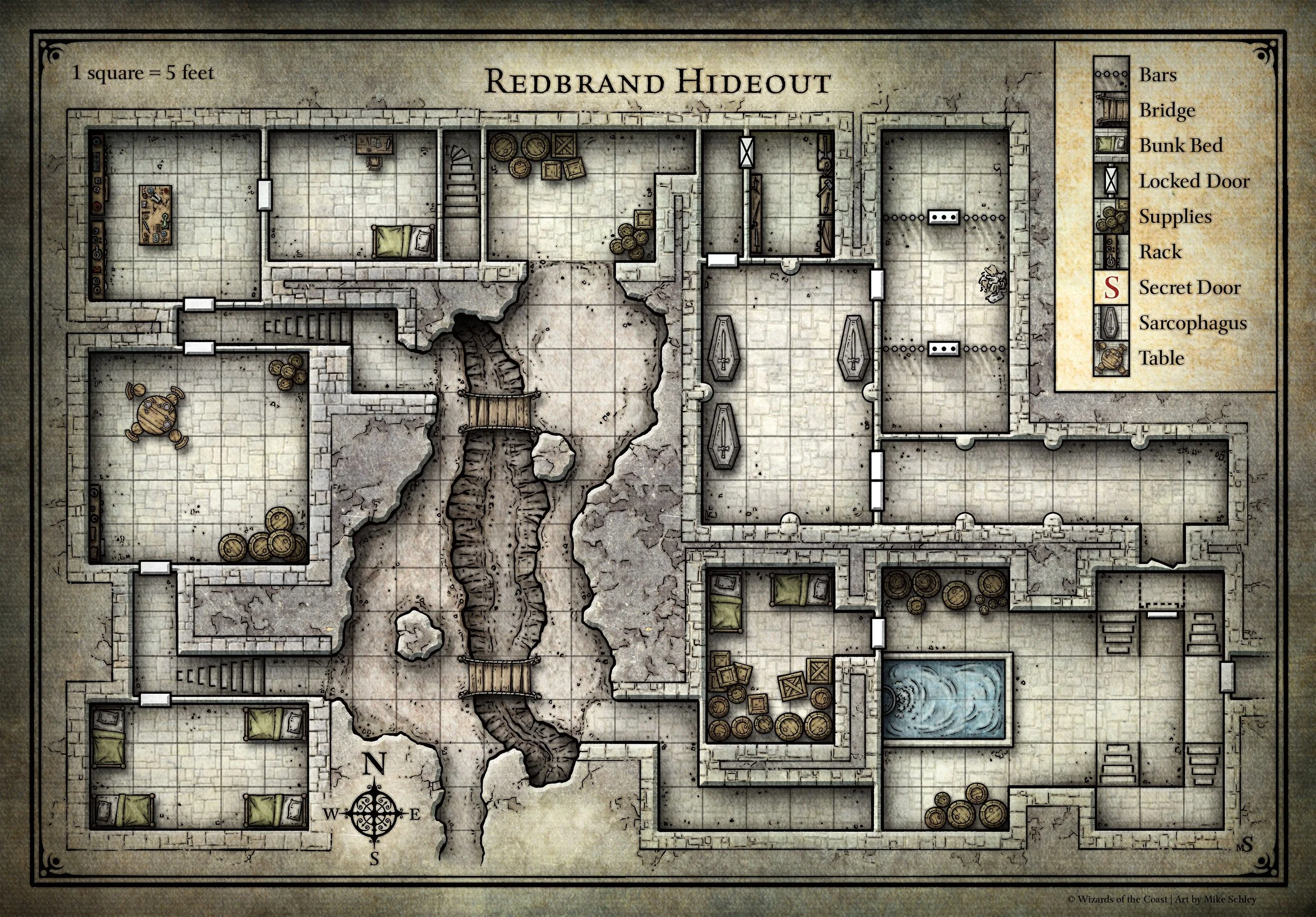
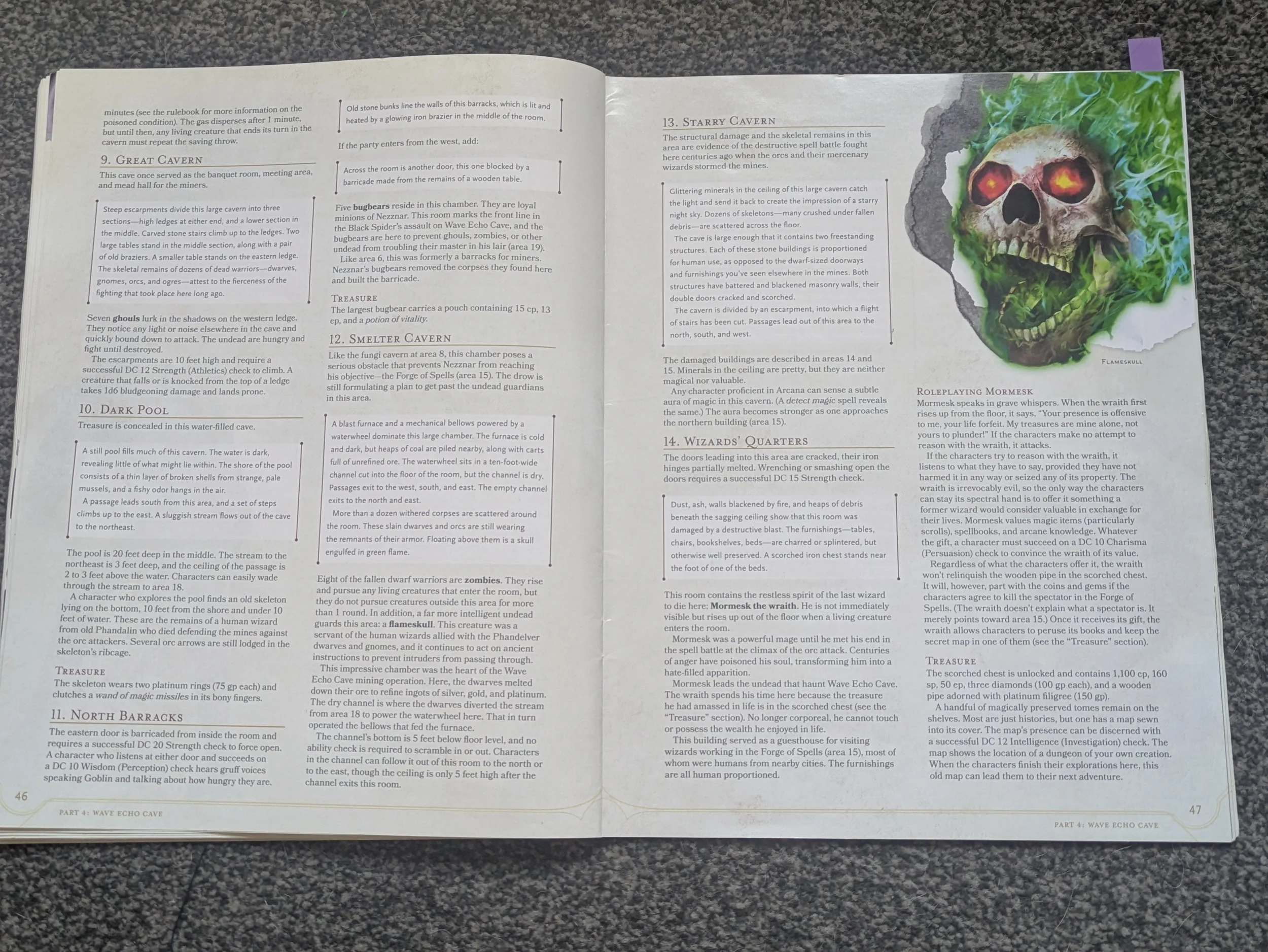

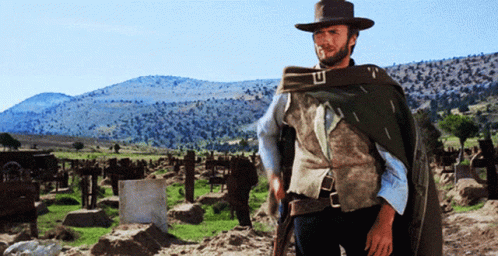







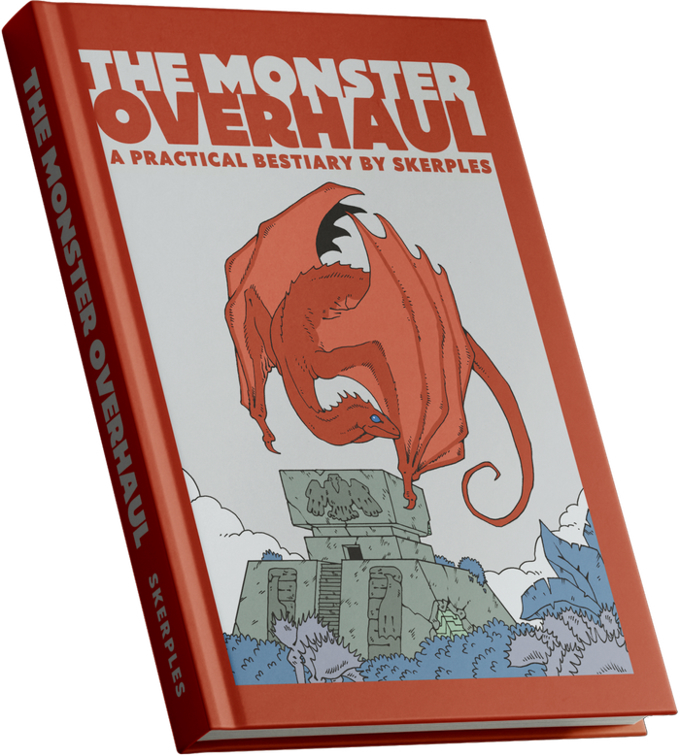

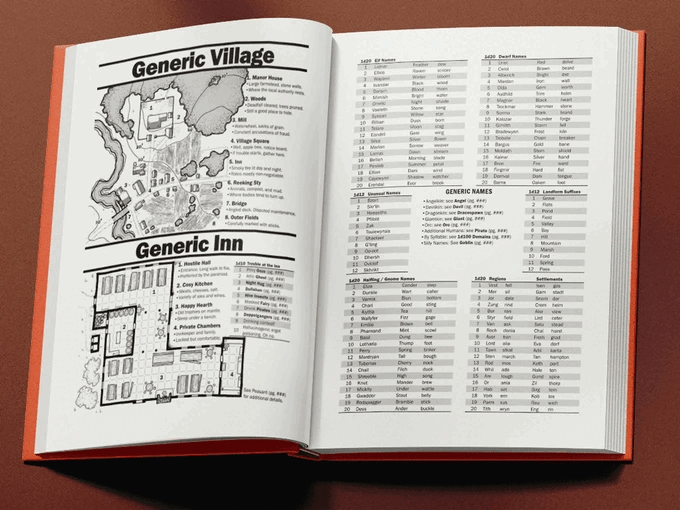







Whether you play TTRPGs or miniature war games, sooner or later you might want some fantasy terrain. This piece is about where I get my terrain from and how I paint it using simple and fast methods.